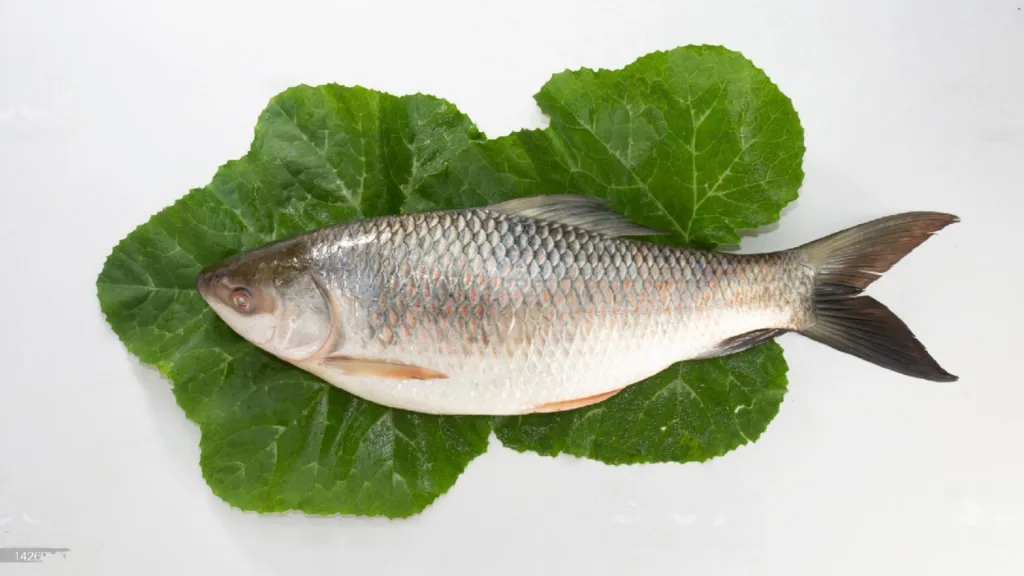Rohu fish farming is gaining popularity in India due to its high demand in the market and high nutritional value. This freshwater fish is a staple food in many parts of the country and is consumed by millions of people. If you are looking to start a rohu fish farm, then this guide will provide you with all the necessary information you need to get started.
Introduction to Rohu Fish
Rohu fish (Labeo rohita) is a freshwater fish that belongs to the family Cyprinidae. It is native to the Indian subcontinent and is widely distributed in the rivers, canals, and ponds of India, Pakistan, Bangladesh, and Myanmar. Rohu fish is a herbivorous fish that feeds on aquatic plants, algae, and other plant matter.
Benefits of Rohu Fish Farming
There are several benefits of rohu fish farming, which include:
- High demand in the market due to its nutritional value
- Easy to rear and maintain
- Fast growth rate
- High survival rate
- Can be reared in ponds, tanks, and cages
- Provides an additional source of income for farmers
Requirements for Rohu Fish Farming
Before starting a rohu fish farm, there are several requirements that you need to fulfill, including:
Land and Water
- The land should be flat, well-drained, and free from flooding
- The water source should be abundant, clean, and free from pollutants
- The water should have a pH range of 6.5-8.5, a dissolved oxygen level of 5-6 mg/l, and a temperature of 25-30°C
- The water should be regularly aerated to maintain oxygen levels

Pond/Tank/Cage Construction
- The pond/tank/cage should be designed appropriately to ensure proper water circulation and drainage
- The pond/tank/cage should have a depth of at least 1.5-2 meters
- The size of the pond/tank/cage will depend on the scale of the operation and the number of fish to be reared
- The pond/tank/cage should be lined with a plastic sheet to prevent seepage
Fingerlings
- High-quality fingerlings should be procured from a reliable source
- The fingerlings should be healthy, disease-free, and of the same size and age
- The stocking density will depend on the size of the pond/tank/cage, but generally, it should be around 5,000-10,000 fingerlings per hectare
Rohu Fish Farming Techniques
There are two main techniques for rohu fish farming:
Pond/Tank Culture
Pond/tank culture involves rearing rohu fish in earthen ponds or tanks. The technique involves the following steps:
- Prepare the pond/tank by removing all the weeds, debris, and other aquatic plants
- Lime the pond/tank to adjust the pH level
- Fertilize the pond/tank with organic or inorganic fertilizers to promote the growth of plankton and other aquatic plants
- Stock the pond/tank with fingerlings at the recommended density
- Feed the fingerlings with a balanced diet of protein-rich pellets, rice bran, and other supplements
- Monitor the water quality regularly and maintain the desired parameters
- Harvest the fish after 6-8 months when they reach the desired size and weight
Cage Culture
Cage culture involves rearing rohu fish in cages suspended in a water body such as a lake or a river. The technique involves the following steps:
- Select a suitable site for the cage that has an abundant water flow
- Install the cage in the water body and secure it with ropes and anchors
- Stock the cage with fingerlings at the recommended density
- Feed the fingerlings with a balanced diet of protein-rich pellets, rice bran, and other supplements
- Monitor the water quality regularly and maintain the desired parameters
- Harvest the fish after 6-8 months when they reach the desired size and weight
Feeding and Nutrition
Rohu fish are omnivorous, and their diet consists of both plant and animal matter. In a pond/tank culture system, rohu fish can be fed a diet of protein-rich pellets, rice bran, and other supplements. In a cage culture system, the fish can be fed a diet of commercial pellets or live food such as worms, insects, and small fish. It is important to ensure that the fish are fed a balanced diet that meets their nutritional requirements.
Diseases and Health Management
Like all fish, rohu fish are susceptible to various diseases, which can affect their growth and survival. Common diseases that affect rohu fish include bacterial infections, fungal infections, and parasitic infections. To prevent diseases, it is important to maintain good water quality, avoid overstocking, and provide a balanced diet. In case of an outbreak, it is important to seek veterinary help and follow proper treatment protocols.

Marketing and Economics
Rohu fish has a high demand in the market due to its nutritional value and is sold fresh or frozen in local markets, supermarkets, and restaurants. The price of rohu fish varies depending on the season, location, and demand. A well-managed rohu fish farm can provide a steady source of income for farmers and can be a profitable business venture.
Conclusion
Rohu fish farming is a profitable venture that has a high demand in the market. With proper planning, management, and care, anyone can start a rohu fish farm and reap its benefits. This comprehensive guide has covered all the essential aspects of rohu fish farming in India, including requirements, techniques, feeding, health management, and economics. Follow these guidelines, and you are on your way to a successful rohu fish farming venture.
Starting a Rohu Fish Farming in India can be challenging, but with the right skills, knowledge, and support, you can build a highly productive garden in your small space. At ffreedom app, we offer a variety of Rohu Fish Farming courses to help you succeed. Our courses cover everything from starting your Rohu Fish Farming to managing and harvesting a good amount of produce from it.
Our courses are designed to give you practical knowledge and skills that you can apply directly to your Rohu Fish Farming. Taught by experienced industry professionals, our courses cater to beginners and experienced Rohu Fish Farming owners alike.
You can explore our Rohu Fish Farming courses through the following links:
Rohu Fish Farming course in Kannada: https://ffreedom.com/kannada/farming-courses/rohu-fish-farming-course-earn-3-lakh-per-year-with-2000-fishes
To learn more about our company and Rohu Fish Farming courses and how they can help you succeed in it, download the ffreedom app from the App Store or Google Play Store.



